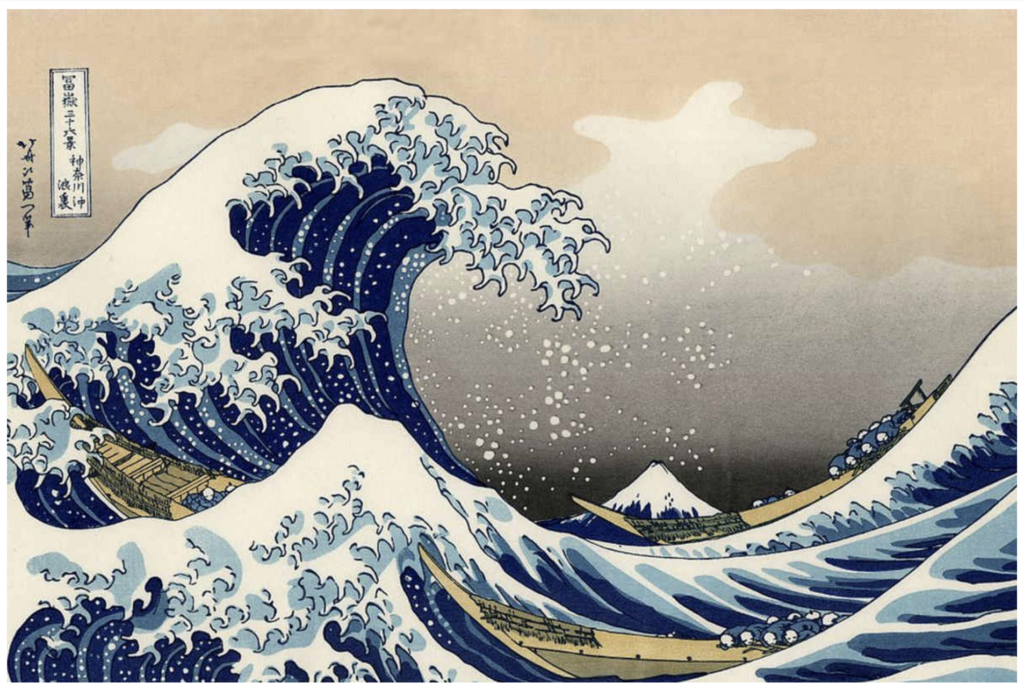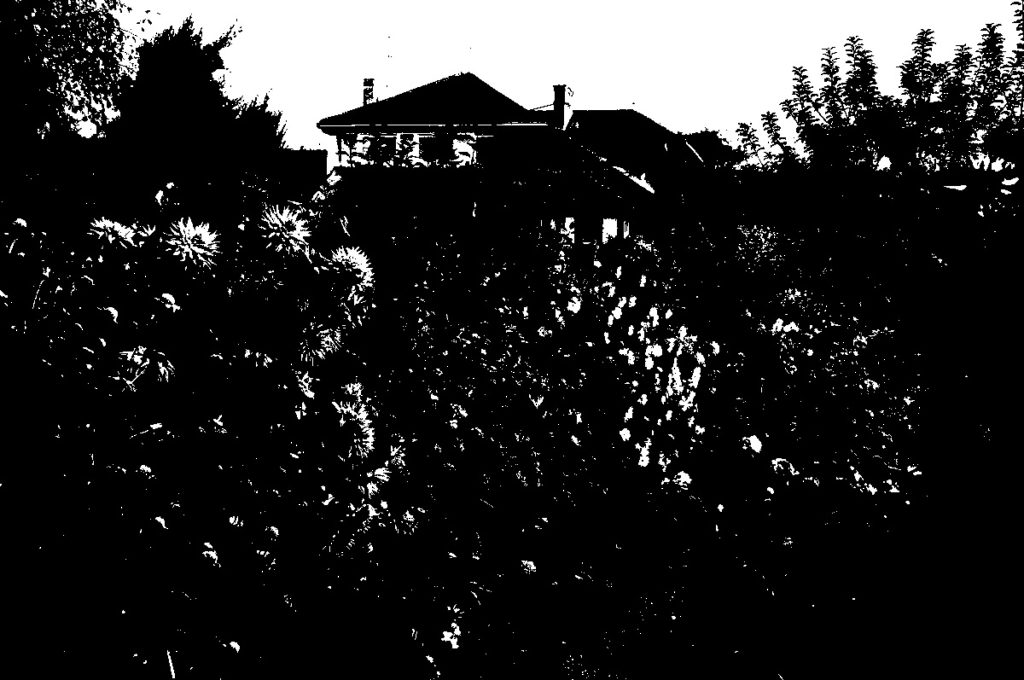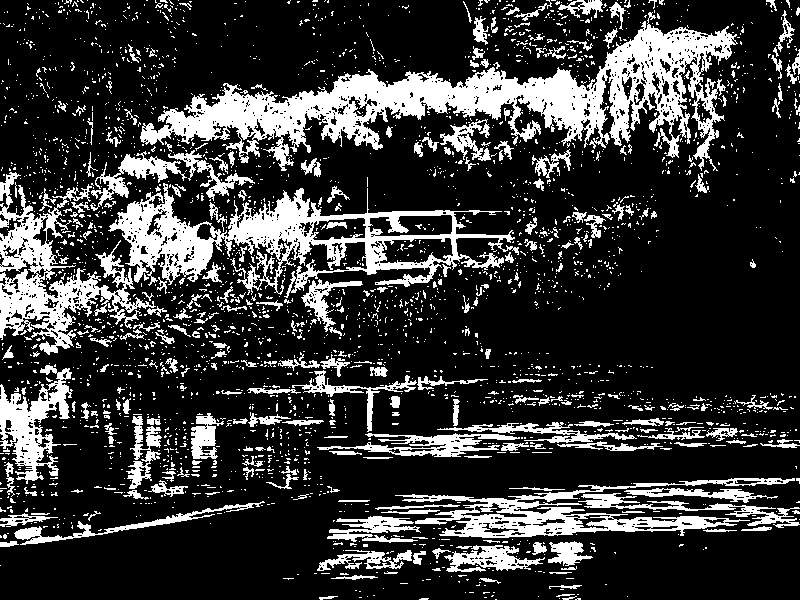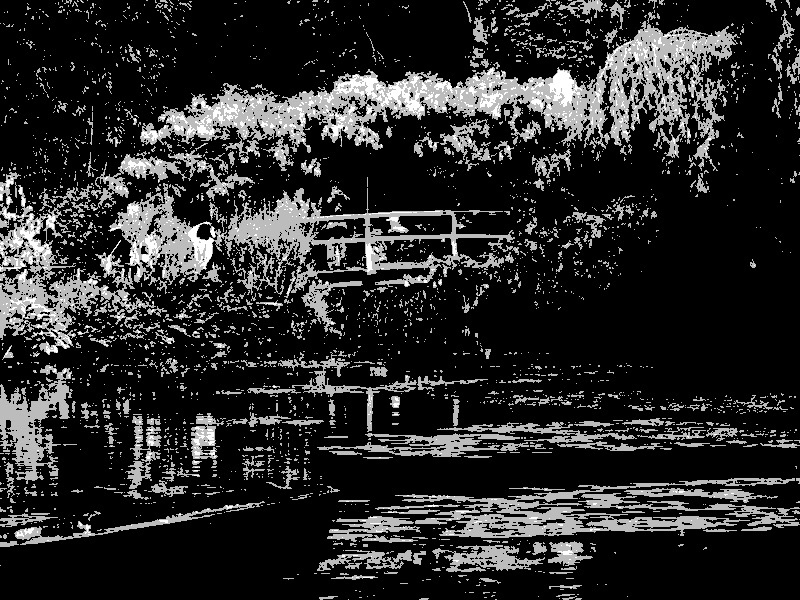Notan, a term derived from the Japanese language, literally means “light-dark balance.”
It is a fundamental principle in art and design that balances light and dark elements in a composition.
 Notan is an excellent tool for simplifying complex scenes and creating a pleasing composition in art and design.
Notan is an excellent tool for simplifying complex scenes and creating a pleasing composition in art and design.
In Arthur Wesley Dow’s book Composition, Notan is covered in depth. Notan is an ideal type of study for finding the shapes and patterns that serve as the foundation of every composition. This is a favorite book in my library…
The Notan principle is beneficial in plein air landscape painting, where the artist uses every line, light, and dark to create a deliberate design.
Claude Monet was strongly influenced by Japanese art. He was an admirer of the work of Hokusai and purchased several of his woodblock prints, which would go on to shake up his creative process.
 Over the years, I have taught workshops in Giverny, France, and was allowed to paint with my students in Monet’s Garden. While visiting Monet’s home it was fun to see the prints by Hokusai which line the walls of Monet’s home.
Over the years, I have taught workshops in Giverny, France, and was allowed to paint with my students in Monet’s Garden. While visiting Monet’s home it was fun to see the prints by Hokusai which line the walls of Monet’s home.
Monet’s Garden is a feast for the eyes of any artist, with beautiful colors, textures, and patterns that can be complex for the novice and advanced landscape painter. The examples of Notan in this article are from one of my Monet’s Garden workshops.
As part of my workshop curriculum, I introduce my students to the principles of Notan. To start, we use two-value thumbnail sketches. This helps the students simplify their compositions.
Once the students feel comfortable with their simple black-and-white design, I have them add a tone of gray midway between the two extremes of black and white. This makes a three-value design.
One of my favorite online art tools is called Notanizer. This helpful app helps to illustrate the use of Two and Three Value Notan. The free app simplifies complex scenes into two and three values, which can be useful for novice painters to see value instead of color.
Below, I’ve uploaded a few pictures from Monet’s Garden. I then used the Notanizer app to simplify them into two values.


The famous bridge at Monet’s pond below with the Notanizer app below…



Although the Notanizer helps to simplify the design, there is still work to be done! The next step will be to link the light and dark patterns into a pleasing design.
Below are a few Notan exercises from the book, Composition by Arthur Wesley Dow.
Exercise for Two Value Notan:
Choose a landscape with a variety of large and small spaces.
1. Compose this within a border in your sketchbook or on a small canvas. Try painting certain spaces black or dark gray, or some dark color like blue. Leave other spaces white or light gray. Landscapes are capable of many 2-value arrangements, but not all will work.
2. Compose the landscape into borders of different proportions; then vary each of these in two values.
3. Work to ‘spot’ Notan design in the field in two values.
Exercise for the Three Value Notan Design:
(4+ values can be used as you progress) Determine the middle value between black and white or light and dark gray.
1. Using paint, mix up these 3 tones.
2. Keep the tone of each value flat so the value can be easily recognized.
3. Apply the three value tones to a design.
You may choose to use ink, charcoal, pencil or paint.
An exercise in charcoal:
Make flat tones and feel the outlines without drawing them.
1. Cover the paper with a very sketchy tone of soft charcoal or pencil. Blend this with a paper stump or soft tissue.
2. Once the mid-gray is obtained, sketch in the darks and lift the lights with a soft eraser or kneaded eraser.
An exercise in oil:
Mix 3 tones with enough to cover your canvas without remixing. Ivory Black and Burnt Sienna make a good neutral gray. Or blue, black & white. Don’t have black? Use Ultramarine Blue and Burnt Sienna plus white.
*Use linseed oil and mineral spirits to thin the mixtures.
*Use a flat brush to keep the tones of each value even.
*Try different designs.
My students and I were able to walk in the footsteps of many great painters and were inspired by the same scenes that captivated Monet. With the use of Notan, my students were able to create some successful plein air paintings.
It was such an honor to be invited to paint where Monet lived and where Impressionism began!
To learn more about Notan, check out Dynamic Oil Painting: Mastering Alla Prima & Notan Techniques online course at Lori’s Fine Art Tips School







